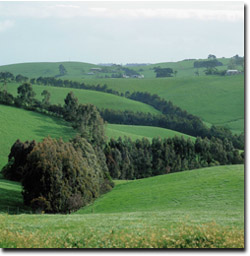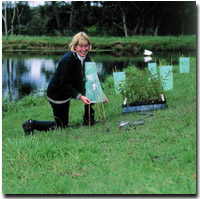Establishing Trees on Farms
- Trees have multiple benefits: they help bind the soil; protect soil and pastures from wind (increase pasture growth by warmer microclimate); increase stock production, encourage wildlife; attract birds which eat pasture pests; reduce erosion; improve waterlogged areas; improve aesthetic values, and can improve the resale value of land.
- Planting trees may improve surrounding pasture and reduce stock stress, therefore improving production. So losing areas that are often not productive (e.g. drainage lines) can actually improve productivity rather than reduce it.
- When planting, use native trees, shrubs and ground cover to maximise the soil protection and suppress weeds. Mixed plantings establish better and allow wind to pass through - creating less turbulence (than solid windbreaks) and providing more protection to stock and pastures.
- When planting trees - look for areas that provide multiple benefits - for example, shelter-belts can slow run-off and create wildlife corridors.
| |

|
- To help your local supplier provide the most appropriate plants for your farm, define what you want the trees for (i.e. erosion control, shelter, revegetation, agroforestry, wildlife corridor) and what area they are intended for (e.g. wet, shaded, low fertility or eroded areas).
Other considerations
- If you have a tree planting project in mind for spring, order trees 6 months in advance to get the species desired.
|



